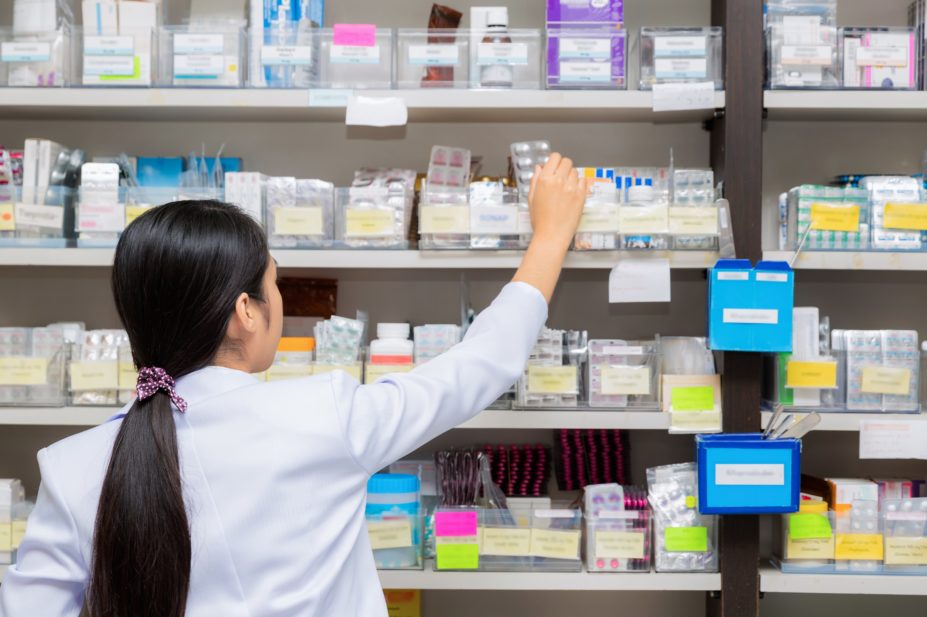
Shutterstock.com
The difference in pay between white and non-white pharmacists has narrowed by 4.8 percentage points compared with 2019, results from The Pharmaceutical Journal’s annual salary and job satisfaction survey suggest.
The survey of 1,409 non-locum pharmacists in Great Britain, conducted between 23 June 2020 and 21 July 2020 (see Methodology), found an 11.0% ethnicity pay gap between white respondents and those from black, Asian and minority ethnic (BAME) groups (P< 0.001). This is smaller than the ethnicity pay gaps identified in 2019 and 2018, which were 15.8% and 15.5%, respectively.
The pay gap equates to a difference of £5,460 per year between white and BAME pharmacists, based on an average 37.5-hour week. The median annual gross salary of white, non-locum pharmacists was £49,530 compared with £44,070 for BAME pharmacists across all sectors.
When the data were analysed by sector, the ethnicity pay gap was smallest in primary care, at 2.8%, and widest in the pharmaceutical industry at 33.8%.
Compared with 2019, the gap narrowed the most among white and BAME hospital pharmacists, reducing from 15.2% to 6.1%. There was little change in the ethnicity pay gap among community pharmacists, going from 15.0% in 2019 to 14.0% in 2020.
When adjusted for age and gender, the ethnicity pay gap persists (P=0.001). However, there is a combined advantage of being both white and male, with white males earning significantly more than BAME males, BAME females and white females, when adjusted for age.
Elsy Gomez Campos, president of the UK Black Pharmacists’ Association, said that while it was essential that such pay gaps are reported, “if measures are not put in place to re-address the existing inequalities, reporting becomes a tick-box exercise”.
Gomez Campos added that there is “little hope that equality in pay will be the norm”.
“While there has been improvement, two questions remain the same: why is there still an ethnicity pay gap and how long will it take to see real equality on this front? Every time we see ethnicity disparities, we are seeing discrimination of the minority. It should not be allowed to happen,” she said, adding that career progression “is a real struggle for ethnic minority groups”.
“Currently, our profession doesn’t have a monitoring and reporting system to ensure an unbiased and fair recruitment process always takes place.”
Mahendra Patel, a member of the Royal Pharmaceutical Society’s English Pharmacy Board and recently appointed national BAME community and pharmacy lead for the PRINCIPLE COVID-19 trial, said it was “extremely encouraging” that the hospital sector had reduced the pay gap between BAME and white pharmacists by such a large amount; however, he said there was “still a lot of work to do”.
“It’s positive news but we must not become complacent that everything is ok in the hospital sector and ease off the gas; we need to continue that effort and share some of that learning across the other sectors.”
Patel said he expected that reducing the ethnicity pay gap in the community sector would “require more work”.
“It’s going to need extra effort because of the different organisations and different structures that are in place [in community pharmacy] – there’s more variation to deal with in terms of process and employment strategies … it is possibly easier to make that change [in hospital] because hospitals settings tend to have a standard system of operation in terms of employment.”
“However, we’re moving in the right direction.”
Referring to the lower attainment rates among black African preregistration trainees, Patel added that he would also like to see more information about how the different groups within BAME were affected by the ethnicity pay gap.
“That will allow a closer spotlight in terms of where [our] focus and attention needs to be,” he said.
The survey also found that that there is a significant gender pay gap of 6.3% among pharmacists overall. This is higher than the gap identified in 2019 (3.6%) but similar to that in 2018 (6.5%).
When analysed by sector, this year’s gender pay gap remains significant for hospital pharmacists (P=0.005) and those working within the pharmaceutical industry (P=0.035), but not for those in other sectors (P>0.05).
The statistical analyses were conducted by independent statisticians from the University of Aberdeen.
Methodology
The Pharmaceutical Journal salary and job satisfaction survey was conducted between 23 June 2020 and 21 July 2020. The analyses, conducted by independent statisticians at the University of Aberdeen, included 1,409 non-locum pharmacists practising in Great Britain. Non-parametric tests were used for bivariate comparisons of median hourly rates and a log-linear model was used for the multivariate analysis. Community pharmacists were under-represented compared with all Royal Pharmaceutical Society (RPS) members (33% versus 50%), and hospital and primary care pharmacists were overrepresented (31% vs 23% and 12% vs 6%, respectively). The proportion of pharmacists working in academia and the pharmaceutical industry were roughly comparable with RPS membership (3% vs 3% and 5% vs 6%, respectively). There were slightly more BAME pharmacist respondents to the 2020 survey than to the 2019 survey (27% vs 23%, respectively.) The proportion of female respondents was also slightly higher in the 2020 survey compared with the 2019 survey (72% vs 68%, respectively).


